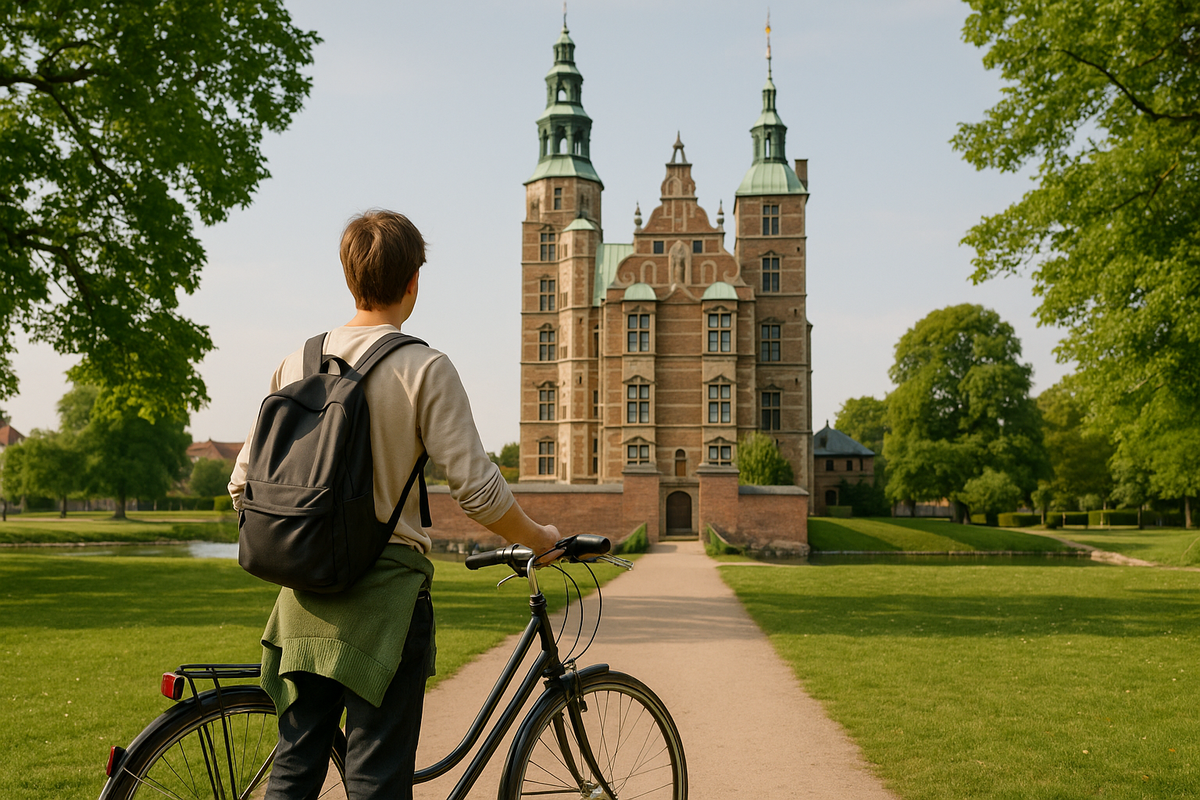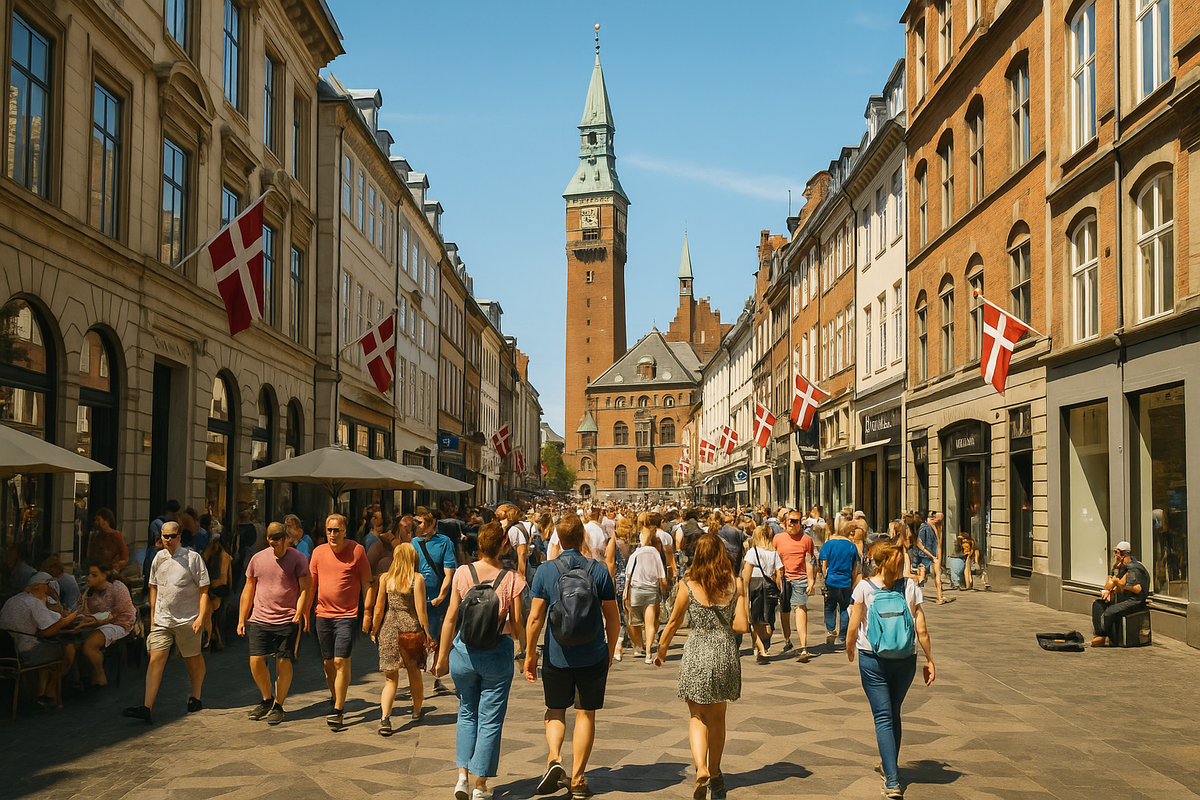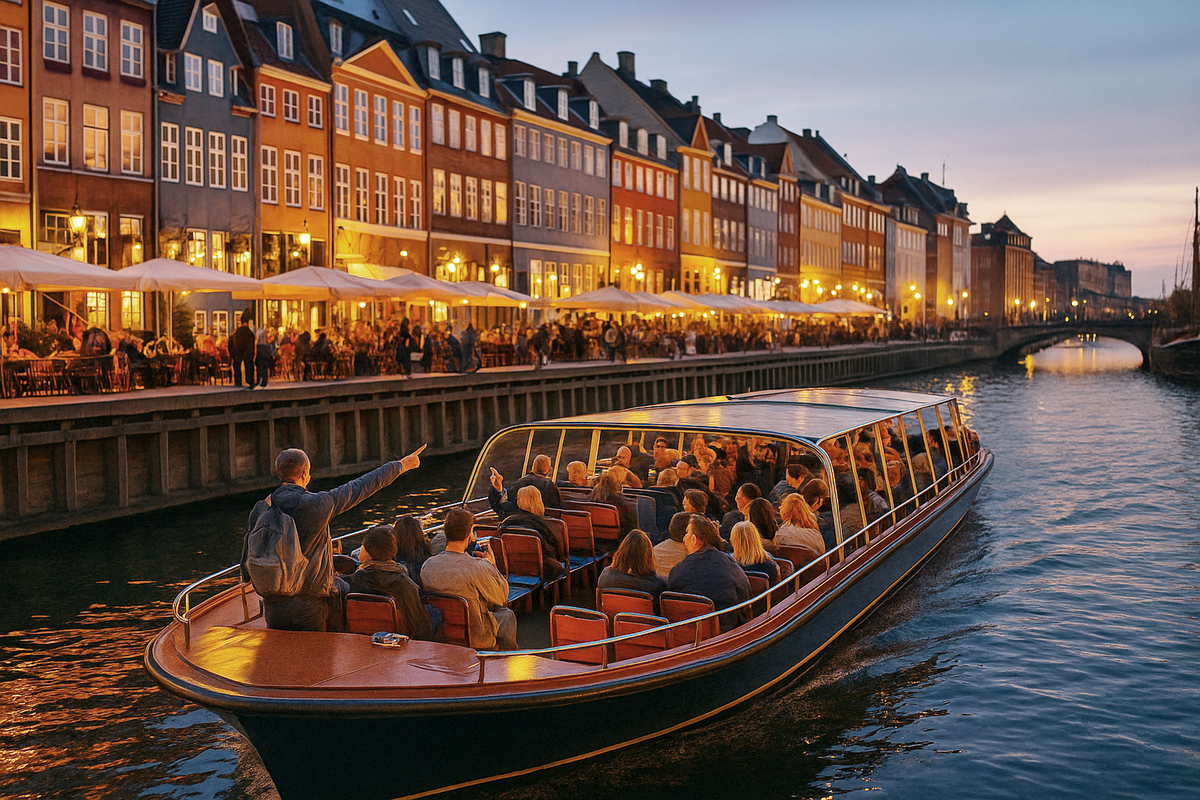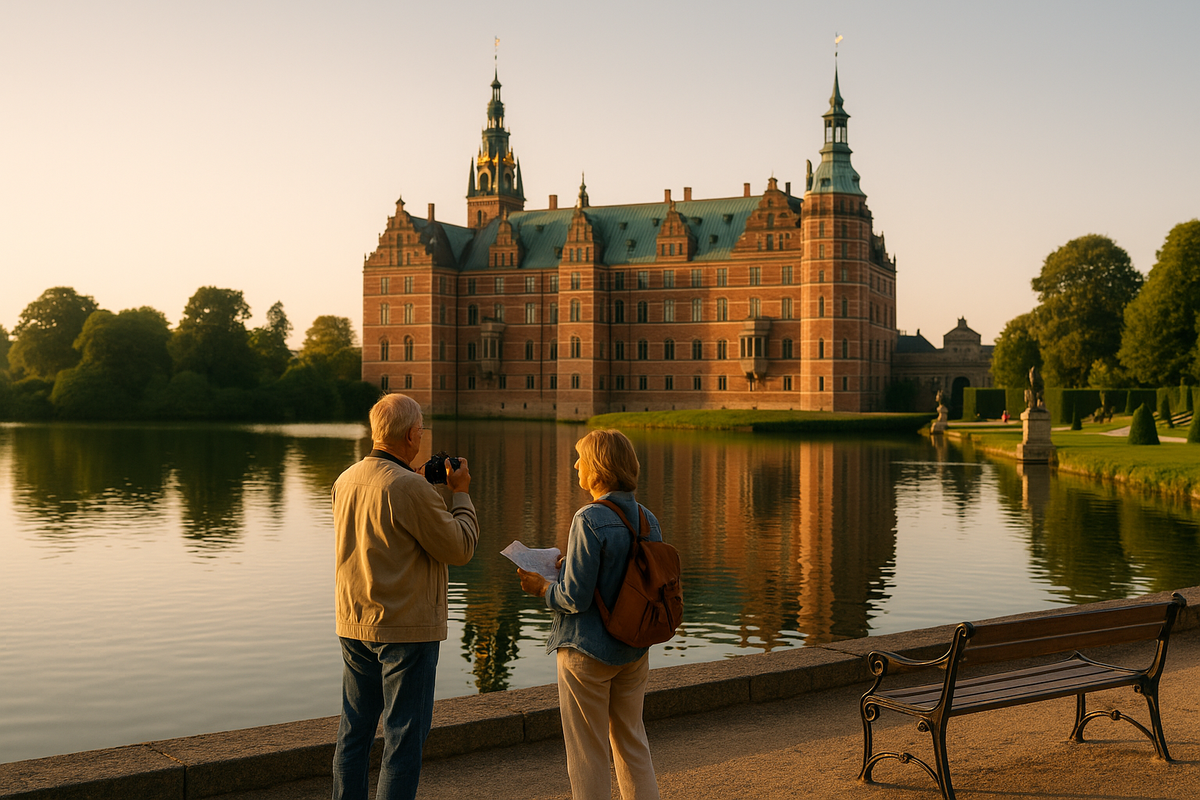😊 Copenhagen for the first time: 2 days, 3 days or 4 days?
The question ‘How many days should I plan for Copenhagen — 2, 3 or 4?’ pops up in every other thread on forums and Reddit. Some say that ‘2-3 days are enough for the city, it's compact,’ others advise a minimum of 3-4 days for a first visit, and tour operators generally allocate 4-5 days for ‘key attractions.’
🔍 The purpose of this article is not to give a ‘universal answer’ but to help you try out three working scenarios:
- 2 days (48 hours)
- 3 days (72 hours)
- 4 days (96 hours)
And to honestly understand: which format suits you personally, your stamina, interests and budget.
Three types of travellers: which one are you?

1. ‘Spontaneous weekend’ — 2 days 🏃♂️💨
- You live in Europe or fly low-cost ‘on a reconnaissance mission’.
- You are fine with a busy schedule and walking 15–20 km a day.
- You want to ‘feel the city’ and take basic photos at Nyhavn and the Little Mermaid — without deep forays into museums and the suburbs.
- You are not planning day trips to Roskilde/castles — at most, a canal tour, Tivoli and one or two museums.
For you, Copenhagen is a dynamic weekend, not a ‘mini-vacation.’
2. ‘Conscious first visit’ — 3 days ⚖️
- You want to see all the classic must-sees without feeling rushed.
- You are willing to invest a little more in the trip, but not stretch it out to a full week.
- You can easily handle 1–2 busy days + one more relaxed day.
- You are interested in both the classics (Nyhavn, Tivoli, castles) and a more local experience — neighbourhoods, markets, gastronomy.
Three days is the ‘golden mean’ format that most bloggers and travel experts recommend for first-timers: a minimum of three to four days for a comfortable introduction.
3. ‘Lover of details and excursions’ — four days 🧭
- You want both the city and the surrounding area: Roskilde, the castles of North Zealand (Kronborg, Frederiksborg), etc.
- You love museums, the design scene, signature cuisine and specialty coffee.
- You appreciate leisurely mornings, markets, walks around the neighbourhoods (Vesterbro, Nørrebro, Østerbro), visits to spas/harbour baths.
- Be prepared for the fact that each extra day means an additional expense for hotel and food (and Copenhagen is objectively expensive).
4 days is the format for ‘living in the city, not just seeing it’.
2 days (48 hours): when is it enough, and when is it a guaranteed race

What you can really do in 2 days 🕒
A typical busy itinerary for 48 hours:
Day 1
- Morning: historic centre, town hall, Strøget, Round Tower (panorama).
- Day: Christiansborg Palace (views from the tower), Royal Quarter, Amalienborg + Marble Church.
- Evening: Nyhavn + canal cruise (1 hour, classic tour 100–150 DKK).
Day 2
- Morning: Rosenborg + Royal Garden (admission ~140 DKK).
- Day: National Museum of Denmark (~140 DKK) or SMK / Glyptotek.
- Evening: Tivoli (admission 180–200 DKK, without attractions) — if in season.
👉 In this mode:
- No trips to Roskilde/castles.
- Minimum of ‘slow’ mornings and ‘aimless’ coffee shops.
- Shopping, markets, local areas — on a residual basis.
It is no coincidence that many who managed to fit everything into two days later write that ‘they managed to do a lot, but ran a marathon’ and were unable to sit down properly in any modern museum or area.
What you almost certainly won't have in two days ❌
With two days, you usually miss out on:
- Day trips (Roskilde, castles of North Zealand, Malmö).
- Leisurely walks around Vesterbro/Nørrebro — at most a quick walk-through.
- Harbour baths, saunas, spas, long coffee culture.
- A large number of modern art/design museums.
In other words, you'll cover the ‘must-see’ attractions, but you'll hardly get to see ‘Copenhagen for locals’.
Weather and season: the main risk of a short trip 🌧️
On a 2-day trip, one rainy or windy day = half the programme. In winter and late autumn, short daylight hours + possible downpours can easily ‘eat up’ 40-50% of your activities.
In summer, the days are long (light until ~22:00), so 2 days in summer are ‘more productive’ than 2 days in November-February.
Budget for a 2-day trip: cheap in total, but expensive ‘per day’ 💸
Copenhagen is one of the most expensive cities in Europe: even for budget travellers, the normal level is from 500-700 DKK per day for a hostel and cooking, and the average traveller easily spends €80-100+/day.
Conditional mid-range (per person in a double room):
- Hotel: ~900–1,100 DKK/night (on average around $274 per room in the city, i.e. ~1,900 DKK for two people)
- Food:
- inexpensive lunch ~150 DKK,
- dinner for two 600–800 DKK (300–400 per person)
- Total for food: ~450–650 DKK/day without alcohol.
Total for 2 days (excluding flights, per person): ≈ 3,000–4,500 DKK, if you are not going on a gastronomic tour.
The cost per day is higher than for 3–4 days because the flight and/or train is spread over only 2 days, not 3–4.
Copenhagen Card for 2 days: is it worth it? 🎫
Official prices for the Copenhagen Card Discover (adult, 16+) at the end of 2025:
- 24 hours — 559 DKK
- 48 hours — 819 DKK
- 72 hours — 989 DKK
- 96 hours — 1,159 DKK
The card includes 80+ attractions + unlimited transport throughout the metropolitan area, including the airport.
Case study: ‘2 days without a card’:
- Rosenborg (140 DKK) + National Museum (140 DKK) + Tivoli (180–200 DKK) + canal boat (100–150 DKK) + 2 days of transport (City Pass 2×80 DKK) = approximately 650–750 DKK for admission and transport alone.
Conclusion:
- If you don't plan to visit 3–4 paid attractions in 2 days, the card will most likely not pay for itself.
- With a busy schedule of ‘2–3 museums + Tivoli + canal boat + active transport’, the 48-hour card comes out to about zero or slightly more, but gives you flexibility (you can visit another museum ‘on the way’). .
When 2 days is a reasonable decision
✅ You have a very limited window (transfer, errands, concert).
✅ You are travelling in summer, ready to walk a lot and strictly prioritise must-see attractions.
✅ This is not a ‘dream trip’ but a reconnaissance mission: ‘if I like it, I'll come back for four days.’
❌ If you are travelling in winter/autumn, love museums, want at least one quiet day and are considering a trip to Roskilde, two days will most likely be a mistake.
3 days (72 hours): the ‘golden mean’ for your first visit ✨

It is no coincidence that many guides and blogs agree that a first visit should last 3–4 days, and the average length of stay in Copenhagen hotels is about 3 nights.
Why forums most often recommend 3 days
- In 3 days, you can cover the ‘classics’ without rushing.
- There is room for one relaxed day: markets, coffee shops, neighbourhoods.
- There is a ‘buffer’ for bad weather: one wet day will not ruin the whole trip.
A comfortable plan for 72 hours
Day 1 — classic centre
- Town Hall, Strøget, Round Tower.
- Christiansborg (including the tower), Amalienborg, the embankment.
- Nyhavn + evening cruise along the canals.
Day 2 — museums and/or Tivoli
- Package: Rosenborg + SMK / Glyptotek / Nationalmuseet.
- Evening: Tivoli (especially beautiful during Halloween and Christmas).
Day 3 — choice:
- Either day trip: Roskilde (cathedral + Viking Ship Museum, admission 70 DKK to the cathedral + museum separately)
- Or a leisurely day in the city: Nørrebro/Vesterbro, Reffen or Torvehallerne markets, harbour baths, design shops.
When the third day is critical
The third day is:
- Weather insurance: if one day is ‘ruined’ by rain, you still have two full days left.
- A chance to see at least one ‘lively’ neighbourhood, not just the historic centre.
- The opportunity to visit a modern museum/gallery at your leisure, not just the ‘must-see’ palaces.
3-day Copenhagen Card: the card is revealed here
The 72-hour Copenhagen Card Discover costs 989 DKK for adults.
A realistic scenario for 3 days:
- 5–6 paid attractions: Rosenborg, National Museum, canal tour, Tivoli, 1–2 more museums/castles (each costing an average of 120–200 DKK)
- Plus 3 days of transport in zones 1–4 (City Pass from 80 DKK for 24 hours)
In total, without the card, you will easily spend over 1,000+ DKK. In this price range, the 72-hour card already starts to save money, rather than just breaking even.
4 days (96 hours): when it makes sense to ‘raise the stakes’ 🧳

4 days is no longer about ‘how to get everything done,’ but rather ‘how to get everything done without getting tired.’
Two scenarios for 96 hours
Scenario A. No trips outside the city — ‘living in the city’ 🏙️
- Day 1: city centre + canal.
- Day 2: museums + Tivoli.
- Day 3: neighbourhoods (Nørrebro, Vesterbro, Østerbro), coffee, markets, harbour baths.
- Day 4: something niche — contemporary art, design market, architectural walks.
You are essentially living a mini ‘life in Copenhagen’ at a comfortable pace.
Scenario B. With trips 🚆
One day is almost entirely spent on:
- Roskilde (cathedral + Viking Ship Museum), or
- Castles of North Zealand — Kronborg and Frederiksborg (there are ready-made one-day tours that cover two castles in a day).
For the remaining 3 days, you more or less follow the 3-day scenario.
Pros and cons of 4 days
Pros:
- Almost no FOMO: ‘we didn't have time to do anything’ — not your case.
- A really comfortable pace: you can insert free mornings and evenings.
- In the off-season, there is a better chance of catching at least 2-3 days with good weather.
Cons:
- Each additional day means + hotel + food, and the daily cost in Copenhagen is already high in itself.
- In the off-season, without any interest in museums and gastronomy, you may get the feeling that ‘you've already seen the city, but the money is still trickling away.’
Copenhagen Card for 4 days
The 96-hour Discover Card costs 1,159 DKK.
In this scenario:
- 6–8 paid attractions in the city +
- a day trip to museums/the cathedral in Roskilde (70 DKK for the cathedral alone)
the card is practically guaranteed to pay for itself and provide significant savings due to the included transport throughout the metropolitan area.
Comparison table: 2 vs 3 vs 4 days 📊
(budget figures are approximate, per person, excluding flights, based on double occupancy and moderate mid-range accommodation)
| Parameter | 2 days | 3 days | 4 days |
|---|---|---|---|
| What you will definitely manage to do | City centre, Nyhavn, canal tour, 1–2 museums, Tivoli (if in season) | Everything from 2 days + 1–2 more museums/neighbourhoods | Everything from 3 days + either a day trip or a deeper “lifestyle” dive into neighbourhoods |
| What is uncertain | Vesterbro/Nørrebro districts, contemporary museums, markets | Day trip (Roskilde/castles) or a full relaxed day | A second day trip or completely “empty” days |
| What you will almost certainly not manage | Day trips, unhurried life in the neighbourhoods | The “both Roskilde and the castles” combo | — |
| Level of rush | 🟥 High | 🟨 Medium | 🟩 Low |
| Approximate budget | 3,000–4,500 DKK | 4,200–6,500 DKK | 5,500–8,500 DKK |
| Copenhagen Card | Pays off only with a very tight schedule | Profitable in most real-life scenarios | Almost always worth it if you have one day trip and visit museums actively |
Season and day of the week: how this affects the choice of duration ☀️❄️
Summer vs winter
- Summer: long daylight hours, more street life, summer venues and all routes are open.
- 2 days in summer ≈ closer in content to 2.5–3 days in winter.
- Winter/late autumn: short days, higher risk of rain/wind.
- 2 days in winter is a risky scenario, especially if you want to see something outside the city centre.
At the same time, Tivoli operates seasonally: summer season + Halloween + Christmas period.
Weekdays vs weekends
- Hotels are often more expensive on weekends; 3 weekdays sometimes cost almost as much as 2 days from Saturday to Sunday.
- For festivals (Distortion, Copenhagen Jazz, Christmas markets), it makes sense to add +1 day so that the event does not ‘eat up’ the entire programme.
Budget: how every extra day affects your wallet (and where to save money) 💶

Main items:
- Flight/train — fixed, almost independent of duration.
- Accommodation — increases linearly (number of nights).
- Food — linear + depends on format (street food vs restaurants).
- Transport and museums/cards — depend on the style of travel.
Key point
- Flights/trains are spread out over several days, so 3–4 days are often cheaper per day than 2.
- But accommodation + food in Copenhagen are expensive, and this is where your personal limit comes into play: ‘how much am I willing to pay for the city in principle’.
Mini cases
Case 1. 2 days without a card (focus on the centre)
- 2 nights in a hotel (mid-range): 2 × 900–1100 ≈ 1,800–2,200 DKK
- Food for 2 days: 900–1,300 DKK
- Transport (City Pass 24h ×2): 160–180 DKK
- Paid admissions (2 museums + Tivoli + canal boat): 650–750 DKK
Total: ~~3,500–4,500 DKK per person.
Case 2. 3 days + Copenhagen Card 72h
If you plan to visit at least 5–6 paid attractions and actively use transport, then:
- Copenhagen Card 72h: 989 DKK. Includes: Tivoli, Rosenborg, Nationalmuseet, canal tour, transport, some day trips.
- Accommodation (3 nights): 2,700–3,300 DKK
- Meals (3 days): 1,350–2,000 DKK
Total: approximately 5,000–6,500 DKK, while you get to see more attractions than in the 2-day option.
Case 3. 4 days, 1 trip outside the city + Copenhagen Card 96h
- Copenhagen Card 96h: 1,159 DKK. Includes transport to Roskilde, admission to many museums, some castles, and a canal tour.
- Accommodation (4 nights): 3,600–4,400 DKK
- Food (4 days): 1,800–2,600 DKK
Total: 6,500–8,000+ DKK, but this is already a full-fledged mini-vacation with a trip out of town and a comfortable pace.
Typical mistakes and regrets 🙈
When 2 days is clearly not enough
- Winter trip, one day of heavy rain → in reality, you see the lights of the city centre, one or two museums, and that's it.
- We wanted a day trip, but couldn't squeeze it into the schedule.
- Festival/fair season: half a day spent in crowds and queues, and only 2 days in total.
Typical feedback: ‘I liked the city, but I feel like something is missing and I want to come back, but not in a rush.’
When 4 days is ‘too much’
- Late winter/early spring, you're not a fan of museums and fine dining.
- Tivoli is closed, the weather is unstable, and you've already ‘walked around the centre three times’.
- No interest in castles and day trips → an extra day turns into expensive walks along the same streets.
Mini-test: how many days do you personally need? ✅
Answer each question honestly with ‘yes’ or ‘no’.
Block A — are you interested in dynamics and economy?
- You are okay with walking 20+ kilometres a day and a busy schedule.
- Your main goal is to ‘see the key sights and stay within your budget’, rather than to experience city life.
- Museums are interesting, but a maximum of 1-2 per trip.
- You are travelling in summer or late spring.
👉 If ‘yes’ ≥ 3 points in block A — you can consider 2 days, but 2 full days + 1 night (with early arrival/late departure) is better.
Block B — balance between must-sees and comfort
- It is important for you to see both the centre and at least one ‘lively’ neighbourhood.
- You love museums/architecture and are ready to visit at least 3–4 sites.
- You don't want to turn your trip into a race.
- You are willing to pay a little extra for ‘no rush’.
👉 If ‘yes’ ≥ 3 — your working format is 3 days (72 hours).
Block C — detailed viewing and excursions
- You want a mandatory day trip (Roskilde, castles, Malmö).
- You love design studios, local brands, specialty coffee, and gastronomy.
- You like the idea of ‘just sitting by the water/in the park for a few hours’.
- Your budget allows you to add another night without serious stress.
👉 If ‘yes’ ≥ 2–3 points — 4 days will be used to the maximum and are unlikely to seem excessive.
Final checkpoint
- If you like dynamism, economy, and are not afraid of busy itineraries → fit in 2 days, but preferably during the warm season.
- If you need a balance between must-sees and comfort → 3 days is the optimal format for a first visit.
- If you want both the city and the surrounding area, and to ‘live in Copenhagen’ → invest in 4 days: here, every extra day really pays off in experience, not just in expenses.
🙂 And then it's a matter of technique: in the related materials, you can already put together a specific itinerary for your 48/72/96-hour scenario.
FAQ
💡Two days is enough to see the city centre, Nyhavn, take a canal cruise and visit 1-2 museums, but it will be a busy weekend with no trips outside the city and almost no leisurely strolls.
💡Three days gives you a good balance: you can see the must-see sights without rushing, have time to see areas outside the centre, and have a buffer if one day is ruined by bad weather or fatigue.
💡Four days are justified if you want to see the classic sights and take at least one trip outside the city (Roskilde, castles), if you love museums, the food scene and the idea of ‘living in the city’ a little, rather than just seeing it.
💡In summer, due to the long daylight hours, you can do more in 2-3 days; in winter and late autumn, with short days and rain, it is more comfortable to plan for at least 3 days, and 2 days becomes a risky option.
💡For 2 days, the card only pays for itself if you have a very busy schedule with lots of museums; for 3 days with 2-3 paid attractions per day, it is usually already worthwhile, and for 4 days and one trip out of the city, it almost always saves you money.





0 comments
Log in to leave a comment